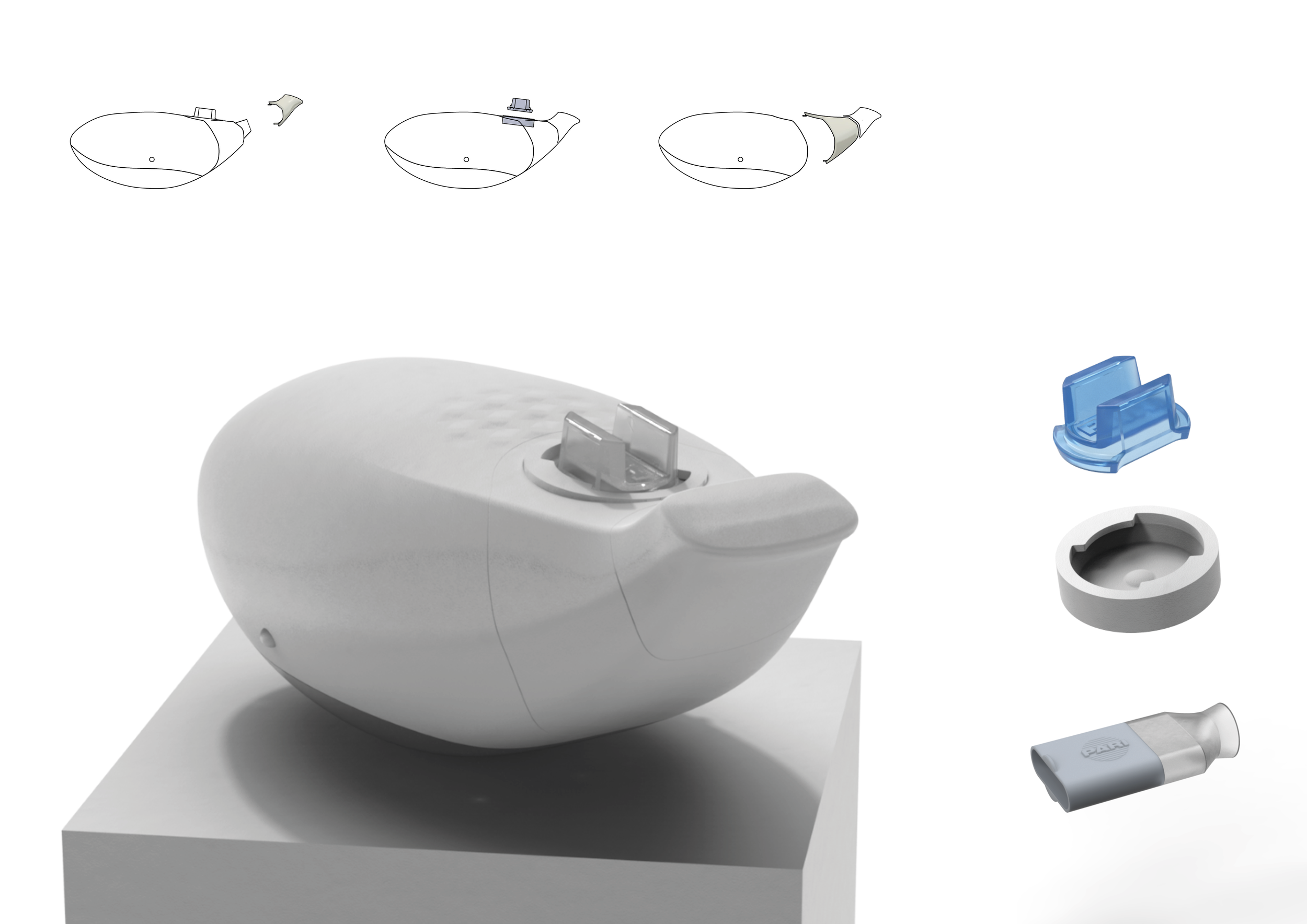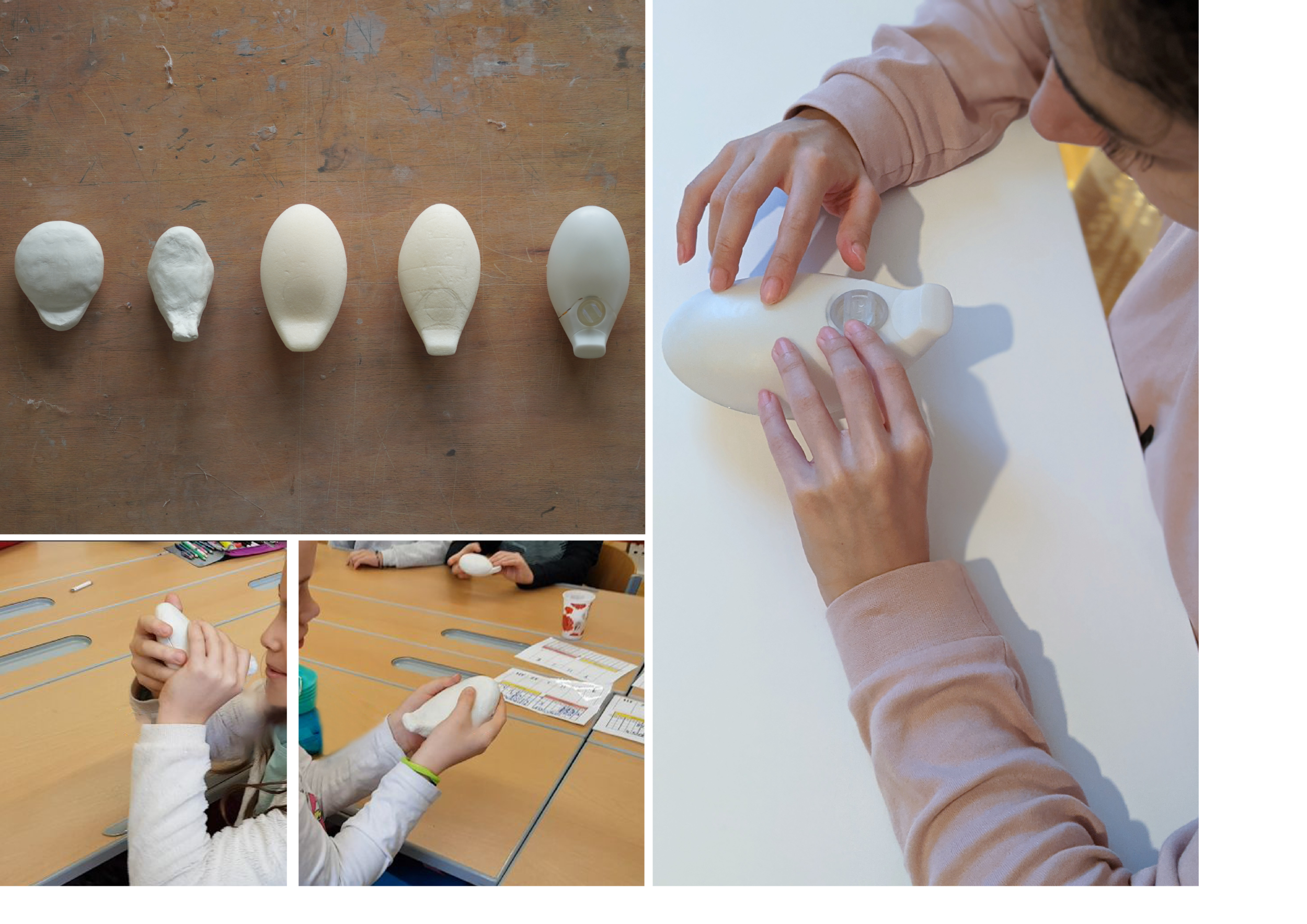Oona
An Inhaler with haptic feedback designed to promote the child’s own responsibility through gamification.


Oona
3rd semester project - 2017 (B.A.)
Individual work
Collaboration with Pari
An inhalation system for the therapy and care of children’s respiratory tract.
According to the “Global Asthma Report”, approximately every 10th child in Austria is affected by asthma. Worldwide, 3 to 11 percent of children suffer from this respiratory disease.
Specially for children, this disease and the associated therapy is a challenge. Very early on, they have to learn to take responsibility.
The Inhalation system should motivate the user beyond the medical benefits and provide joy by using it. Positive experiences with the application assure a continuous use.
Children are curious and like to explore. Specially haptics are an important factor in understanding the environment.
Tactile patterns on the surface of the inhaler act as a guide for the correct inhalation and playfully encourage the asthma monitoring and management.
Concept development
Continuous monitoring and asthma management are supported by a diary that will help the child to work independently and raise awareness of the disease. Also, further medical consultations are facilitated because the child can communicate directly with the doctor.
The diary comes with instructions as well as a little story about a whale overcoming its fear of being excluded, together with its friends. In addition, there are questions that deal with the well-being of the child. The pattern, that is shown on the inhaler after each inhalation, contains a simplified representation of inflammatory values and respiration data that can be transferred into the diary by drawing on the small raised areas.




How to use
1) Turn on the device
By pressing down the inhalator on a surface or simply pressing the bottom of the inhalator, it can be activated. Switching off the device works the same way as is done turning on the device.
2) Choose your mode
The child can choose between different modes. These are:
Inhalation mode
Previous inhalation values
Previous patterns
Night mode
3) Inhale
A wave shows, visually and haptically, how and when to inhale. After the inhalation, a pattern, that can be felt and seen, rewards the child after each inhalation and should be transferred to the diary. The sample contains a simplified representation of inflammatory values and respiration.
4) Night mode
The device can be used as a night lamp to provide a calm night. The night mode can be additionally activated during the charging process via wireless charging.
5) Cleaning
Pressing the buttons on each side of the inhaler activates the UV-light in the inside, which cleans the device.
Additionally parts of the device are dishwasher friendly.
Components
The pattern on the surface of the inhaler is triggered by actuators. These can be felt and seen on the surface.
The medical capsule is inserted by twisting and it seals itself upwards. Below, it is pierced by a thorn, so that the liquid reaches the nebulizer. This contains dosed active ingredients and can also be mixed with flavours. Each medication may have its own colour. A recycling of the packaging is possible.
The mouthpiece is made from medical grade silicone. The slight bump at the top and bottom faciliates the hold.


User testing
The shape is complemented by the ergonomic adaptation to a child’s hands and creates an additional emotional component.
After consulting with the school for children with visual impairment or blindness, “Odilien” in Graz, the built mock-ups were tested by the children of the Styrian Pedagogical Elementary School to find the most comfortable ergonomic shape.


Key Takeaway
Rather than obsessing about achieving the right answer, it is more vital to be interested, open to new possibilities, and unafraid to make mistakes. It is important to express every idea.
An exploration process, preferably including as many people as possible, helps to find what is at the heart of the design challenge, and it may be very different than what one thought it was at the beginning.





